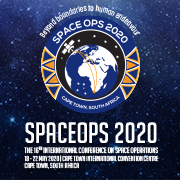›Star Formation 2016
The scientific rationale and scope of the meeting
The last decade or more of observational star formation has been characterised by wide-field, multi-wavelength surveys. These studies have provided a rich database across star formation, from the collapse of filaments to the identification of transitional discs. The new era for star formation will be dominated by high-angular resolution instrumentation, where individual objects, carefully mined from the rich seam of survey data, are probed spatially and kinematically in unprecedented detail.
Our theoretical understanding of the star formation process has undergone a parallel revolution. From GMCs to planet-forming discs, there is a growing realisation that the role of radiation and chemical feedback in controlling fragmentation and accretion processes is key. The comparison of simulations with observational data is also reaching a new level, with the generation of synthetic spectral, imaging, and visibility data directly from hydrodynamical models.
Our aim is to bring the community together to discuss and consolidate the results of large scale surveys and prepare for the era of targeted, high-resolution exploitation of this knowledge. Equal emphasis will be placed on theoretical and numerical research, with a particular focus on the interface between observations and theory.
The meeting will be hosted by the Astrophysics Group at the University of Exeter in the south-west of England. As well as traditional invited reviews, contributed talks and posters there will be a morning of break-out sessions and access to interactive display tables suitable for visualisation of complex survey data or simulations. Crucially there will also be extensive opportunity for interaction away from the lecture theatre, with catered lunches, evening social events, and organised trips, as well as the conference dinner.
The city of Exeter dates back to the Roman occupation and is the county town of Devon. The centre of Exeter is dominated by its 13th century cathedral and is described by the Lonely Planet Guide as an old city with a young heart, thanks to its large student population. The county of Devon is one of the most beautiful in England, boasting two national parks (Dartmoor and Exmoor) and two stretches of coastline, with long, sandy beaches. It is close to two World Heritage sites: Stonehenge and the Jurassic Coast.
The meeting will be held on the University of Exeter's campus, in the new Forum building with talks in the Alumni Lecture Theatre and lunches and posters in the Street. Bed and breakfast accommodation will be provided in Holland Hall, a short walk from the Forum, in ensuite double-bedded rooms.
The scope of the 5-day programme will cover GMC formation, cloud structure and filaments, core formation, accretion and outflow processes, emergent stellar populations and the IMF, discs across the mass spectrum, finishing with structured discs as signatures of planet formation.
Track this event on your Apple calendar














 United Kingdom
United Kingdom